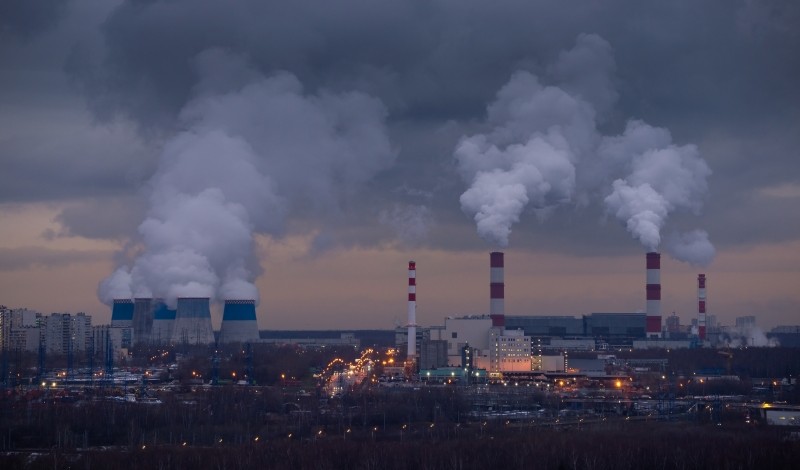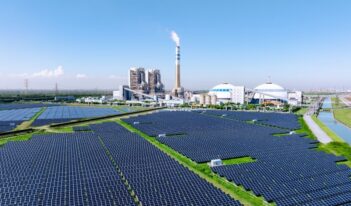
Scholars study optimal regulations to reduce carbon dioxide emissions.
Carbon dioxide accounts for 75 percent of all climate-warming pollution in the atmosphere. Climate change has become so alarming that, as of June 2024, 107 countries have pledged to reach net-zero carbon emissions by 2050. Despite this embrace of support for environmentally conscious policies, the United Nations explains that none of the countries are yet on track to meet the steep net-zero requirement. Scholars around the world are grappling with this concern and researching what policies are best suited to curbing carbon emissions.
In a recent article, Haitao Xu and several coauthors from China’s Dalian University of Technology propose that the best approach is to alter carbon regulations based on the economic development of individual regions.
The Xu team explains that researchers have conducted several studies on optimal carbon emission regulations, including on such topics as the relation of regulations and technological innovation and the efficacy of regulations based on public participation. Although these studies yielded important results, Xu and his coauthors contend that they all include gaps that need to be addressed.
The Xu team identifies three such gaps. First, they team notes that the results of these studies are too dependent on historical data and do not address how governments tend to avoid regulations that would drastically and suddenly impact the economy. Second, Xu and his coauthors explain how previous models ignore regional differences in industrial structures and technological levels, which result in the assumption that all economic regions are impacted by environmental regulations in the same way. Finally, the Xu team states that most studies adopt a single-industry model, which ignores how the same environmental regulations can affect different industries in various ways.
To account for these gaps, Xu and his coathors created a multi-regional model to compare the impacts of different environmental regulations over time. The Xu team listed three primary objectives for their study: First, to compare the economic and environmental effects of carbon-tax and carbon-emission trading policies; second, to study how the regulations uniquely affect different economic regions; and third, to discover how these types of regulations affect different industry sectors.
Xu and his coauthors focused their study on two regions in China, the Beijing-Tianjin-Hebei region and the more economically developed Yangtze River Delta region. They note, however, that the model and their discoveries can be applied to other regions of the world. Within these regions, the Xu team studied three scenarios: the baseline of current regulations in China, a carbon-tax policy, and a carbon-emissions trade policy.
The Xu team found that in the baseline scenario emissions will continue to rise in China as a whole and within the two regions studied. They note, however, that carbon emissions were significantly reduced by both the trade policy and the tax policy, and that the tax policy was more successful than the trade policy.
Xu and his coauthors further explain that the trade policy reductions may be overestimated. Successful carbon-emission trade policies require a developed economy and highly market-oriented financial institutions. But the Xu team notes that China’s economy is still developing. This constraint is exhibited by the Yangtze River Delta region having significantly greater reductions under the trade policy than the Beijing-Tianjin-Hebei region did, explain Xu and his coauthors.
Although the Xu team found the carbon tax policy to be more effective than the carbon-emission trade policy, they also found it to be worse for the economy. They point out that China’s GDP increased in all three scenarios, but that it increased at the highest rate in the baseline scenario and at the lowest rate in the carbon-tax scenario.
Xu and his coauthors also proved that the single-industry model is ineffective for studying environmental regulations. They discovered that of the seven industries they studied, energy, transportation, and heavy industry had the greatest emission reductions, and that agriculture had almost no reduction. The Xu team also notes that the effects of each policy on the seven industries varied by region. They found, for example, that construction emissions were reduced more than transportation emissions in the Beijing-Tianjin-Hebei region, but that the opposite was true for the Yangtze River Delta region.
The Xu team acknowledges that more environmental regulations are necessary to reach net-zero carbon goals by 2050, but that the trade-off between environmental and economic benefits does not point to an obvious best policy for maximizing social welfare. Because there is no clear solution, they provide several recommendations for crafting more effective environmental regulations.
First, Xu and his coauthors argue that policymakers should consider the economic development of different regions and institute corresponding regulations. The Xu team suggests using a carbon-emission trade system for developing regions to prevent stifling economic growth, and then switching to a carbon-tax system for more effective emissions reductions once a region has developed sufficiently. Second, they contend that countries should devote more resources to developing technology to help reduce emissions in the heavy-industry and energy sectors. Finally, they recommend future research on the impacts of different environmental regulations on individual industries.



